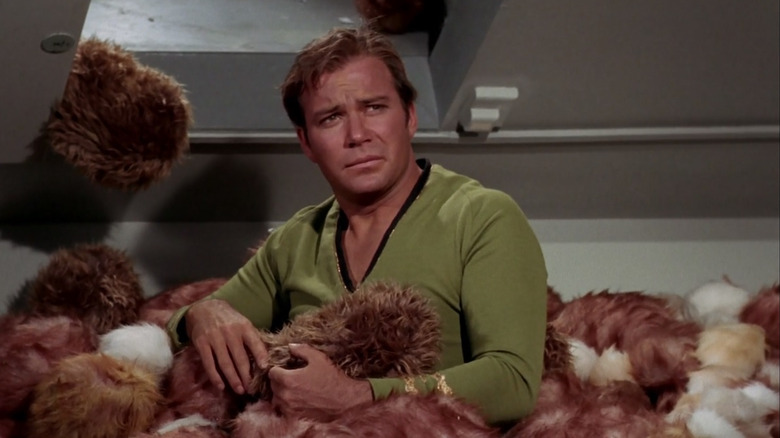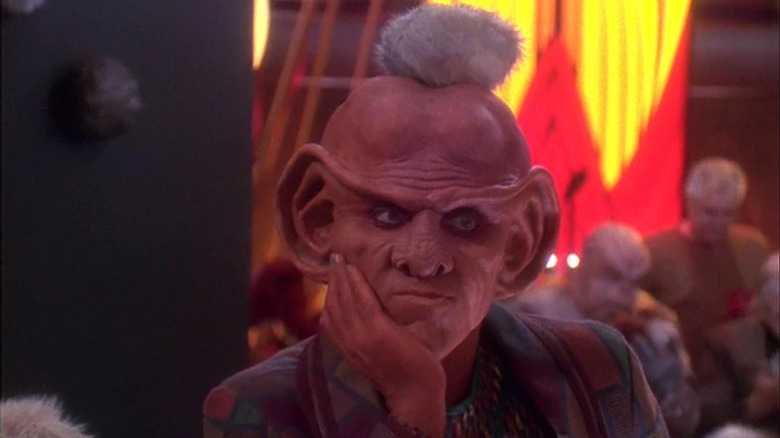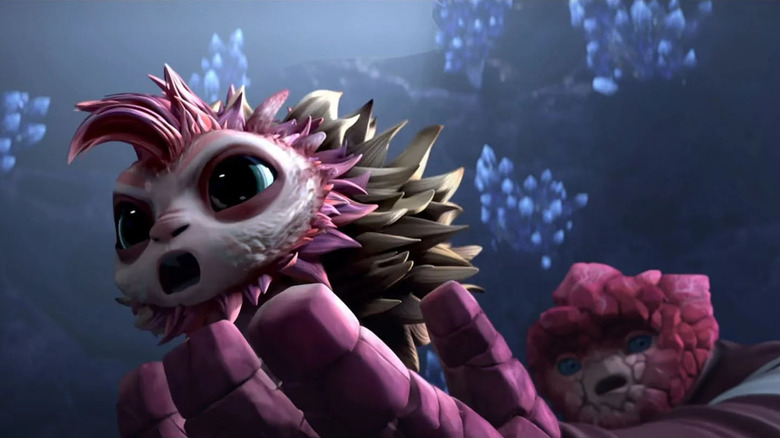Unless they’re a Klingon or Captain James T. Kirk (William Shatner), pretty much everyone loves Tribbles. The alien critters, first introduced to the “Star Trek” franchise in the original series season 2 episode “The Trouble with Tribbles,” are cute little furballs who reproduce with incredible speed, sort of like faceless bunnies on baby-making hyperdrive. They’re both adorable and a major problem because they reproduce asexually and are born pregnant, able to produce a litter of 10 baby Tribbles, each pregnant themselves, whenever they are fed. Anyone who’s ever tried to stop their pet from getting food they weren’t supposed to knows it can be close to impossible, and if you have a pet Tribble, that means you now have 11 Tribbles.
Tribbles were allegedly wiped out by Klingon forces according to Worf (Michael Dorn) on “Star Trek: Deep Space Nine,” but a killer Tribble variant appeared in “Star Trek: Picard,” so they’re probably still out there, somewhere. Tribbles can be dangerous when they start clogging things up (though they’re at least less deadly than the similarly precious but murderous Moopsy of “Star Trek: Lower Decks”), but originally they had a name that made them sound far less formidable.
Star Trek’s Tribbles originally had a sillier name
In an interview with StarTrek.com, “Star Trek: The Original Series” writer David Gerrold, who worked on “The Trouble with Tribbles,” revealed that the original name for tribbles was actually “Fuzzies,” which just didn’t sound right. He explained:
“I made the name change, and in retrospect Tribbles is a much better name because Fuzzies is too cute. I don’t think Fuzzies would have developed the same kind of cultural recognition. You wouldn’t have had people referring to Fuzzies the same way they refer to Tribbles. And I think because Tribbles was a neutral word – “Here’s this nice little creature and it’s called a ‘Tribble’ – we added a word to the English language. I made a list of silly-sounding words you could call such a creature and cross off all the ones that were too silly. I wanted people to take them seriously.”
I’m not sure that anyone ever took Tribbles too seriously, given the fact that they’re little purring, chirping fuzzballs, but he’s absolutely right in thinking that “Tribble” is a better name than “Fuzzie,” which is ultimately forgettable and doesn’t lend itself to a great episode title name. (What would they have done? “The Frustration with Fuzzies?”) “Tribble” also just sounds funnier, and since a big part of “The Trouble with Tribbles” is comedy, that matters.
A Tribble by any other name
Tribbles have become a fan-favorite in “Star Trek” because they’re both adorable and kind of annoying, which makes them fun to embrace (additionally, Worf is cute when he’s annoyed). They’ve appeared in live action in “Star Trek: The Original Series,” “Star Trek: Deep Space Nine,” and “Star Trek: Picard,” in animated form on “Star Trek: The Animated Series” and “Star Trek: Prodigy,” and are arguably one of the more popular species in the franchise despite being giant quivering fluffs. In “Prodigy,” the “Star Trek” series aimed at younger audiences, the franchise got its first Tribble with a face in the character of Bribble the Tribble, a fully sentient little critter that was a genetically modified super-Tribble. I, for one, would love a Bribble.
It will be interesting to see if we encounter any more Tribbles going forward, because it could be a challenge to write them into “Star Trek: Strange New Worlds” given the fact that many of the crew will later discover the little guys for the first time when they are older, during the events of the original series. Prequels are tricky, but since “Star Trek” has the ability to play with different dimensions, time warps, and more, it’s totally possible we could see the crew of Captain Pike’s (Anson Mount) Enterprise face their own troubles with Tribbles at some point.










